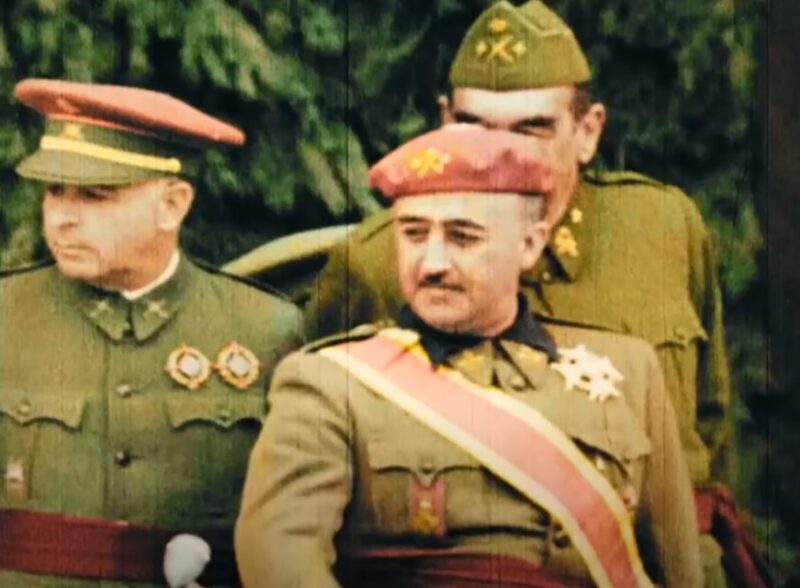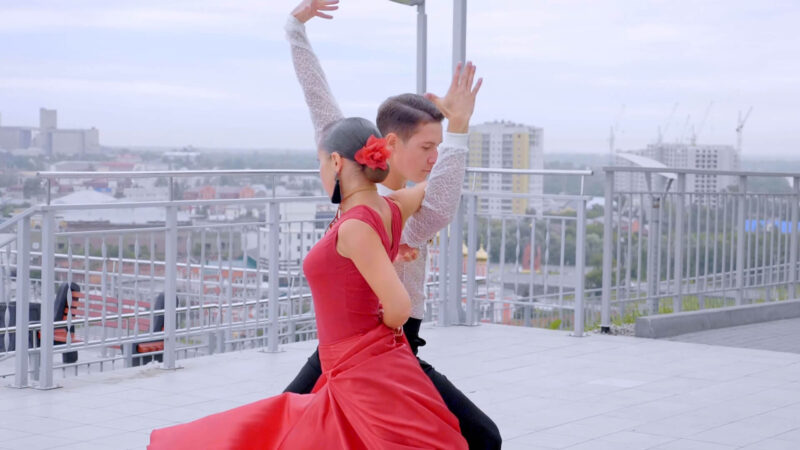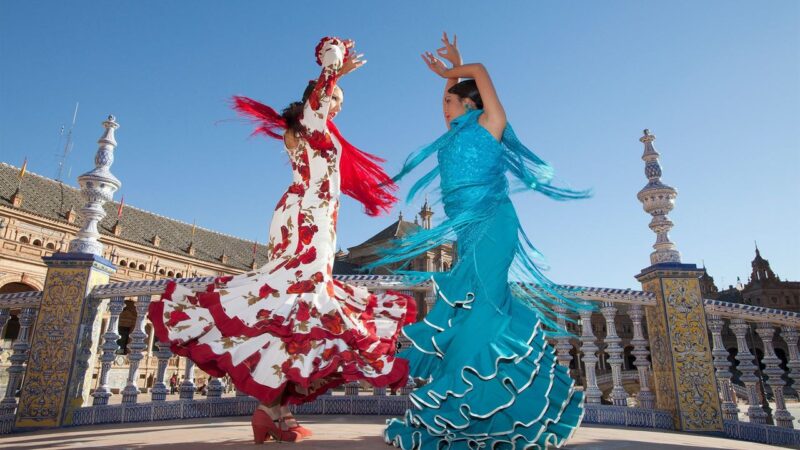Flamenco, a dance originating in southern Spain, was once banned primarily because it was closely associated with marginalized groups like the Romani people and the Moors, who significantly influenced its development.
The authorities during Francisco Franco’s regime saw flamenco as a threat due to its roots in these oppressed communities.
The dance’s lyrics often addressed social and political issues, making it not just entertainment but a form of protest.
This aspect of flamenco made it a target for suppression by Franco’s government, which aimed to quell any potential challenges to its control.
The Ban on Flamenco

During its ban, flamenco was heavily restricted, which deeply impacted those who practiced and performed it.
Despite being targeted by authorities, the art form survived and even flourished through underground channels.
Flamenco’s legacy was also maintained in public spaces and cultural events, often in defiance of legal restrictions.
This allowed flamenco to continue evolving, incorporating diverse styles and influences from various regions and communities.
Although the ban attempted to suppress the expressive and cultural identity associated with flamenco, it inadvertently underscored its importance as a symbol of resistance and resilience.
End of the Ban
Flamenco, an art form originating in the southern regions of Spain, faced repression in the past.
After the Spanish Civil War, Francisco Franco’s dictatorship saw the suppression of many local customs, including flamenco. However, as Spain shifted towards democracy in the 1970s, flamenco experienced a rebirth.
The establishment of Flamenco Peñas, neighborhood associations dedicated to teaching flamenco traditions, played a vital role in nurturing the art form and passing it on to younger generations.
During this period, flamenco regained its place in Spanish culture and eventually began to spread worldwide, with authentic performances drawing interest from tourists and enthusiasts alike.
Cultural Significance

Flamenco originated in southern Spain, particularly in the regions of Andalusia and Murcia. The precise origin of the term “flamenco” is unclear, but it developed from the contributions of various musicians and performers in these areas.
The art form traces its roots back to the Roma migration from Rajasthan in northwest India to Spain, which took place between the 9th and 14th centuries. Flamenco is a composite of song (cante), dance (baile), and instrumental music, predominantly featuring the guitar. It has been traditionally linked with the Andalusian Roma, or Gitanos.
Over the years, flamenco has evolved, mirroring the complex cultural and political dynamics of Spain. Its deep roots in diverse cultural influences make it much more than a mere dance form; it’s a profound expression of emotion through its music and performance, embodying the essence of the cultures it represents.
During the mid-19th century, the commercial theaters, or cafés cantantes, played a significant role in flamenco’s development, shaping the art form that we know today.
However, the political side of flamenco has emerged during times of social upheaval. Flamenco has been used as a tool for political protest in several instances, such as during flashmob according to Smithsonian Magazine.
In Southern Spain, neighborhood associations or peñas dedicated to flamenco started appearing in the 1970s as the country began its transition to democracy.
These organizations have been crucial in teaching flamenco’s traditions and providing space for both new and experienced talent, ensuring the art form continues to thrive.
Spain under Francisco Franco
Francisco Franco ruled Spain as a dictator from 1939 to 1975 after the Spanish Civil War ended.
His regime tightly controlled Spain’s cultural and political environments, crushing any opposition and curtailing freedom of speech.
This authoritarian governance led to the suppression of various cultural and artistic expressions, including flamenco, which is a significant and traditional art form from Andalusia.
Franco’s government pushed a nationalist ideology that aimed to foster a uniform Spanish identity, highlighting specific traditions seen as “authentically” Spanish.
Consequently, regional cultures and diverse identities were suppressed in favor of a centralized notion of Spain.
For instance, while Franco’s regime actively promoted bullfighting and flamenco as quintessential Spanish cultural symbols, it diminished the unique cultural and musical traits of regions outside Andalusia, which did not align with the regime’s nationalist ideals as stated by Lumen Learning.
Legacy and Recognition
In 2010, Flamenco was inscribed in UNESCO’s Representative List of the Intangible Cultural Heritage of Humanity.
Although flamenco has its roots in Southern Spain, the UNESCO listing acknowledges the contribution of various ethnic communities, such as the Andalusians, Romani, and Moors, in the development of this distinctive musical and dance performance.
Global Influence
Over the years, flamenco has captivated global audiences and inspired many artists across different cultures. This Spanish art form has found a place in diverse world stages, such as the renowned New York-based Flamenco Vivo Carlota Santana, which is a prominent center for flamenco dance and culture in the United States.
Internationally, multiple flamenco festivals are showcasing the talents of flamenco artists from different backgrounds.
The Mont-de-Marsan Flamenco festival in France, or the Flamenco Biennale in the Netherlands are two examples of such events, illustrating the influence and reach of flamenco beyond Spain’s borders.
I am Edward Quin, a teacher and part-time freelance writer specializing in Spanish and English. With a major in these languages, I have a deep grasp of their structures, cultural richness, and literary traditions. My passion for languages inspired me to become a high school teacher, where I motivate students to discover new cultures and languages.

